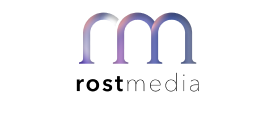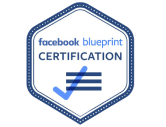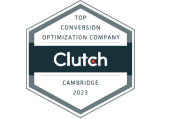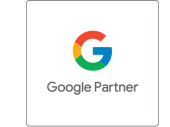1. Why use PPC for SaaS:
People tend to go to search on Google when looking for a new product or service. This is why your ad should be on the 1stpage for all relevant terms.
2. Inform Your Long term SEO Strategy:
With PPC you can test quickly and find which keywords work well in delivering valued traffic to your website. This can help to inform your SEO Strategy.
3. Have a Multichannel Approach:
It’s important to have a multi-channel approach to ensure you are present throughout the entire conversion journey. Within marketing, the Rule of 7 informs us that a potential customer typically needs to see an offering 7 times before they take action to buy a product or service. For the SaaS industry the deliberation period is likely to be longer and the potential customer will likely want a trial period on the software prior to making decision.
4. Control Over Messaging:
PPC ensures you have more control over your creative messaging. This can allow you to tailor the message differently to each person at different stages of the purchase funnel, or tailor messaging based on target audience groups.
5. Test Bidding on Competitors:
PPC allows for competitor bidding, this can bean effective strategy to focus on highly qualified target audiences. Data from the “Annual 2019SaaS Trends Report“, highlighted that 39% of mid-sized companies switched between SaaS providers in 2018. This could mean there is plenty of opportunity to win over your competitor’s customers or would-be customers. You must however be cautious with this approach, as your competitor keywords will often have a higher CPC. The competitor keyword CPC could potentially be in line with the cost of highly sought after generic keywords, in some cases more. Additionally this may encourage competitors to bid on your brand terms, further inflating your own brand CPCs. This increased bidding in live ad space auctions only results in more money in Google’s pockets. Therefore if you do choose to go down this route it is important that you tailor your landing page and creative to improve conversion rates. One potential landing page idea to try is a comparison page. This could include information that highlights the benefits of your product vs the competitors and can go into detail of how your service has more features, is cheaper or is more effective.
6. Tailor Landing Pages:
This is extremely important and should not be overlooked. We can do everything in our power to drive the correct traffic at the correct price. However if the landing page does not efficiently address the audiences’ concerns or doesn’t sell the product well enough then we are essentially wasting the clicks. This is even more important to have optimized when taking into consideration the competitive nature of the SaaS industry. We use Balsamiq when creating wireframes for our clients and Google Optimize to continuously deploy tests and improve performance. Another great tool to get a full picture of the user journey is Hotjar. Hotjar provides screen recordings and heatmaps and much more. By setting up custom goals we can also track the journey of a user on your website to learn where our audience may drop out of the conversion journey and how they can be efficiently retargeted.
7. Utilize Google Audiences:
If a user is logged into Google Chrome or Gmail, then Google will know their browsing behavior and will categorize them into various audience groups. Have a look at what Google knows about you here. You can leverage this data to amend bids for your keywords or other campaigns types that are targeting audiences. The use of ‘in-market’ audiences can often lead to a lower CPA and an increased conversion rate. Custom audiences can also be used as long as the audience size is larger than 1000 (these could include past website viewers, past convertors or similar audiences to past convertors). Retargeting audience can be grown over time and utilized across all PPC platforms as either independent audiences or as a bid adjustment within other audiences (i.e. intending to bid more on audiences who have already clicked on your website). It is essential to set up custom retargeting audiences as soon as possible to ensure the audience can be populated prior to utilizing them for your targeting.
8. Optimize for Paying Customers:
When we ask our clients how they define success in terms of a campaign. Clients normally refer to the number of demos or cost per acquisition. This may satisfy investors in terms of users; however it’s very important to workout the lifetime value of each type of consumer and the likeliness of that user to sign up. This ensures that the company has longevity and influx of constant income. We often use a metric for our clients that look at how many months of subscription it takes for each country or audience to break even or become profitable. We have achieved this through the use of Segment and CRM system. Segment can pull the conversion value through to Google Ads & Facebook Ads and Supermetrics can be used to display that data within Google Sheets.
9. Attribution Model:
The use of PPC also allows you increased freedoms in selecting which attribution model is appropriate for your business. In its basic form, an attribution model is a way in which we analytically attribute conversions to a marketing channel. The choice of your model is important as it can influence how you attribute success, optimize campaigns, evaluate ROAS, or plan future activity. There is no ‘one size fits all’ model for attribution as your overall marketing strategy needs to influence your selection for attribution. Within PPC we have the option to select between Last Click, First Click, Linear, Time Decay, Position-based or Data-driven. Given the long consideration period within the SaaS industry, we would not recommend Last or First Click attribution. We often find that Position-based and Time-decay are common attribution models given the ease of use (these place added valued to the initial and final interactions between a customer and your ads). With Time-decay, more credit is given to interactions which happen closer to the conversion point, whereas attributed equal credit to both the first and final interaction, whilst dividing 20% of the remaining credit to the interactions which happen between these. Our recommended model within the SaaS industry is Data-driven which attributes credit based on how people engage with your ads. Google computer modelling uses data from your own account to “determine which keywords, ads, and campaign shave the greatest impact on your business goals”. Data driven modelling requires a large number of historic conversion to accurately attribute responsibility, if this data is lacking, we would recommend Time-decay or Position based modelling. It is also important to note whilst it is beneficial to utilize the same attribution model across different platforms to assist comparability (in ROAS for example), we must note the user journey and therefore marketing strategy could be different across different platform and ever pre and post demo if the user was first to commit to a demo and then pay for a software package. Your marketing manager should fully comprehend the user journey of your users to best ensure the correct attribution model is utilized and used to its full potential.
Final thoughts…
Hopefully the above comments have better prepared you to launch PPC campaigns for the SaaS industry. PPC should play an important role within your overall marketing strategy as it has been proven to have a big impact to the bottom line of your business. SaaS businesses should be very aware of the long deliberation period and high competition within the industry. With this in mind, it becomes very important to deliver the right message at the right time to the right person. The ability to target users along the full length of the conversion funnel with tailored messaging is a powerful tool to place you ahead of the competition. After your campaign has run its course, the learnings gathered will ensure that you maximize your ad spend, make optimization to future activity, learn vital details about your users’ journeys and tailor your website and SEO to best suit this journey.
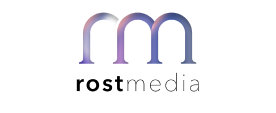

.png)
